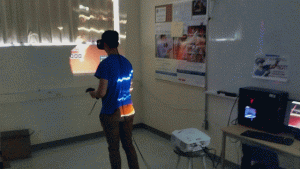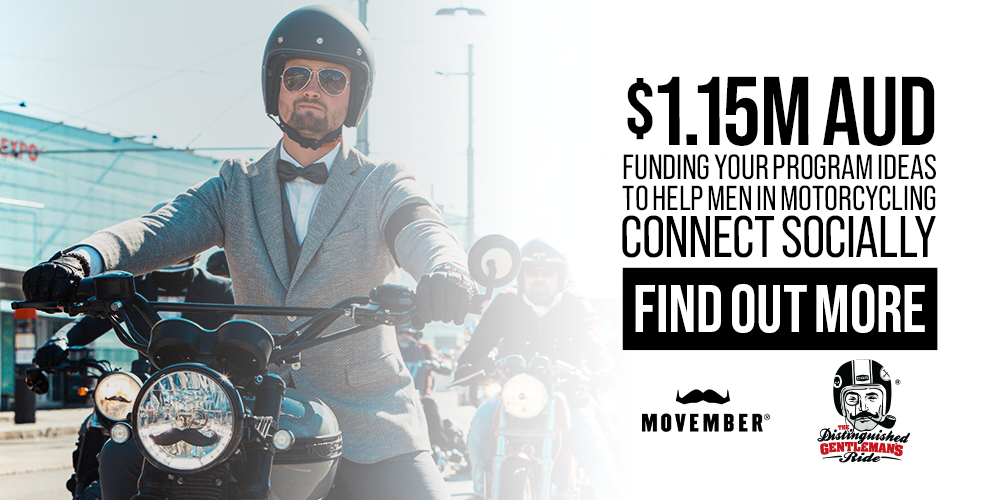
I teach computer and software engineering when I’m not motorbiking. This year I’m also doing a Ministry of Education grant on virtual reality research with some other teachers in my school board and it has left me wondering about how immersive simulation might work with motorcycles.
We have an Oculus Rift and an HTC Vive in our lab at school, so we can look into software development on two of the largest immersive virtual reality platforms. VR has split into a couple of different camps. You’ve got the cheap viewmaster style of VR like Google Cardboard that uses your smartphone to produce quick and easy 3d visual experiences. At the other end of the spectrum you’ve got the fully immersive systems like our Vive, Oculus and Sony’s PlaystationVR. These systems are still pretty expensive, but they work surprisingly well for first generation devices – I often have students come out of them as though they are waking up surprised to find themselves back at school. VR, whether it’s a simple smartphone enabled device or the fully immersive kind, has a great deal of emotional impact.
How could VR be used in the motorcycle industry? If you want to see a new bike in 3D to get a sense of what it looks like in the flesh, looking at it on a 2D monitor won’t do a good job. Google cardboard and a smartphone are all you need to see in 3D. If that isn’t a cheap and obvious tool for dealers looking to advertise motorcycles, I don’t know what is – Jaguar is already doing it. I suspect you’re going to start seeing simple VR viewing kits included in smartphone packages in the future as the advertising power of immersive medium becomes more apparent.
The immersive simulation served up in VR has real emotional impact on customers looking to make a decision. You wouldn’t be limited to a bike model either. Taking a 360° video of a walk through of your showroom would allow customers to virtually see many bikes in 3d along with having a sales presence at their beck and call with no threat of pressure. Virtually checking out a showroom before you make the trip over there is going to be a key sales hook in the future.
Virtually experiencing the factory where your favorite manufacturer produces your dream machine? Can you imagine the brand loyalty generated? VR is an intensely personal experience – your fans would feel like they had been on a VIP tour after that. This kind of intimacy in marketing has a powerful effect.
Beyond the 3d imaging offered by basic VR, fully immersive systems offer a level of experiential training that is otherwise cost prohibitive. The thousand dollar headsets might seem expensive, but last year at the Skills Canada National Competition I was talking to a company that makes tree harvesting systems for the forestry industry. These mechanized systems cost hundreds of thousands of dollars. Up until the past couple of years a new operator had to learn by sitting in the real deal. When they broke blades or damaged robotic arms it cost big money in both equipment and lost harvesting time. At last year’s Skills Competition they had one of their new VR training systems – an operator’s chair surrounded by an accurate recreation of the physical controls hooked up to a VR headset. Suddenly you’re in a forest grabbing trees with a million dollar tool and learning how to best operate the machine. They could simulate failures and varying conditions as well. These $10,000 a seat systems saved millions in their first year of use. New operators could spend many hours learning the system before ever setting foot in the real thing, and poor operators could be selected out before ever doing any damage.
Riders seldom get a chance to ride a bike before they buy them. VR could change all that. A system of wireless sensors could be attached to any motorcycle in the showroom. With the bike wheel locked onto a simple pitch/yaw/roll mechanism, you could experience the ergonomics of your specific machine without ever turning over the engine. Specs could then be loaded into the VR simulator and then you go for a ride, virtually. You would get a personalized, immersive audio and visual experience while feeling how you fit on the machine without using any gas or depreciating any new model. This kind of experience is very engaging. I suspect the sales rate after such a VRride would be exceptional – it would also be a draw to get customers into the showroom.
Specialized simulators for racing are another obvious training tool. Riding and racing schools, teams and other specialists could offer VR as a first, less expensive step into everything from working out the basic controls of the machine for a beginner to Jorge Lorenzo trying various lines around a track while experiencing suspension and engine setting changes before doing it in the flesh.
Even the first generation immersive VR systems we have now would be capable of offering this level of training. They’ve only been out for a year or so (we ordered our Vive last April), but the possibilities around this emerging technology make my glad I have early adopter experience with it. A couple of students dropped by the lab the other day wanting to try it out (it generates buzz even in students not taking computer tech). After half an hour trying out Tiltbrush, Google Earth and our new Oculus handsets one of the girls took the headset off with stars in her eyes and said, “wow! This is the future!”
In five years it is entirely possible that tens of thousands of people will have a much more intimate idea of what it feels like to be Valentino Rossi on a perfectly tuned Yamaha M1. Pretty cool, eh?
from Blogger http://ift.tt/2nSZoge
via IFTTT
















